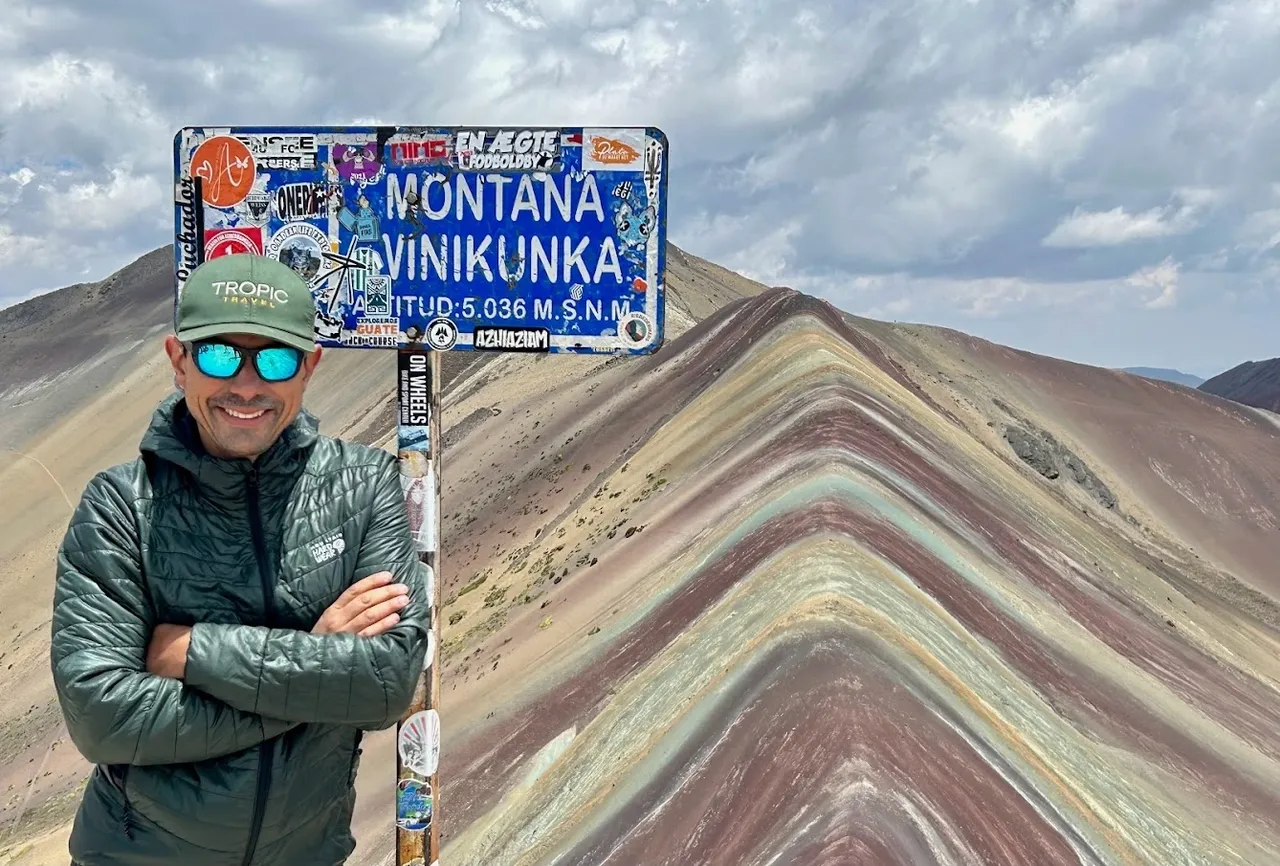
Responsible Travel In South America
Is it really possible to travel responsibly in South America? Our aim is make all our holidays as sustainable as possible, through careful planning, mitigating environmental impacts and ensuring local habitats and communities benefit from our holidays accordingly. From eco lodges, expert guided wildlife activities, slow travel and especially a reduction in flying. Ecotourism in South America is on the up, and one of the most important decisions we made was to therefore only work with the most ethically-minded, eco-focused, inspirational and innovative partners in each country. One of these is Tropic, our partners for Peru Ecuador and The Galapagos.
We sat down for a Q&A with their CEO and Founder, Jascivan Carvalho to talk about sustainable tourism, and all things travel in South America.
1. What are Tropics key principles / ethics / aims?
Our business was founded on the concept of sustainable tourism – both ecologically and culturally – long before it was a buzz phrase. Tourism has an impact, no matter how you look at it, and we want that impact to be positive. To enhance the lives of the locals through connections or employment opportunities. Better yet – opportunities that allow them to share their culture with the world while helping to preserve it.
To help preserve ecosystems is equally important. One good example is our partnership with Galapagos Magic Lodge on the Galapagos Forest Initiative. Magic’s conservation contributions have been widely recognized, and in season, the reserve is home to more than 100 Galapagos tortoises that are free to roam, unhampered, unthreatened – a delight for the many visitors to the camp and its reserve. This Initiative is an effort to protect the Galapagos Islands’ unique and endemic species, including helping to restore the habitat and improve the welfare of the iconic and endangered tortoises. Read more about our Island-hopping Galapagos trip which has been designed with eco-tourism in mind.
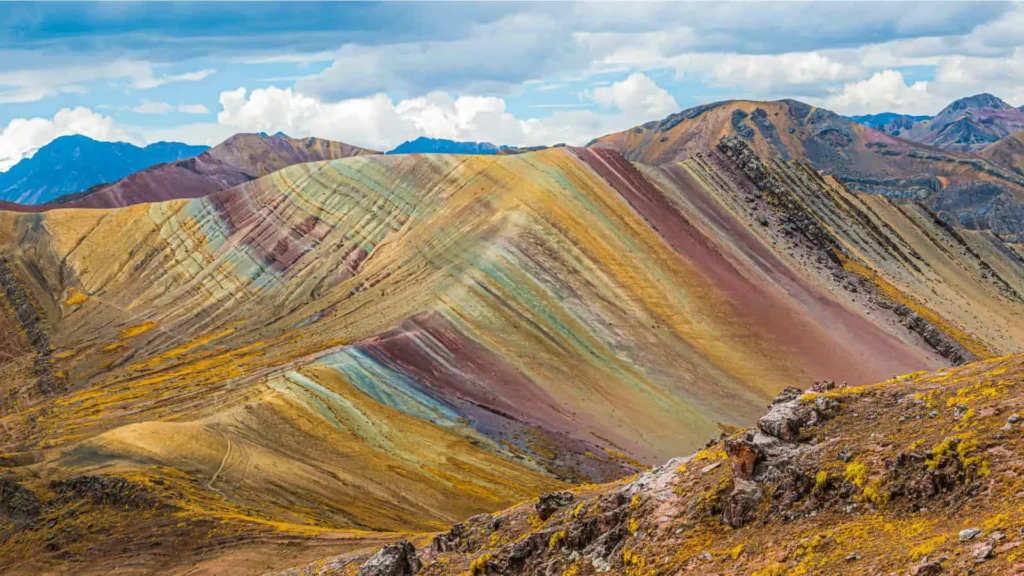
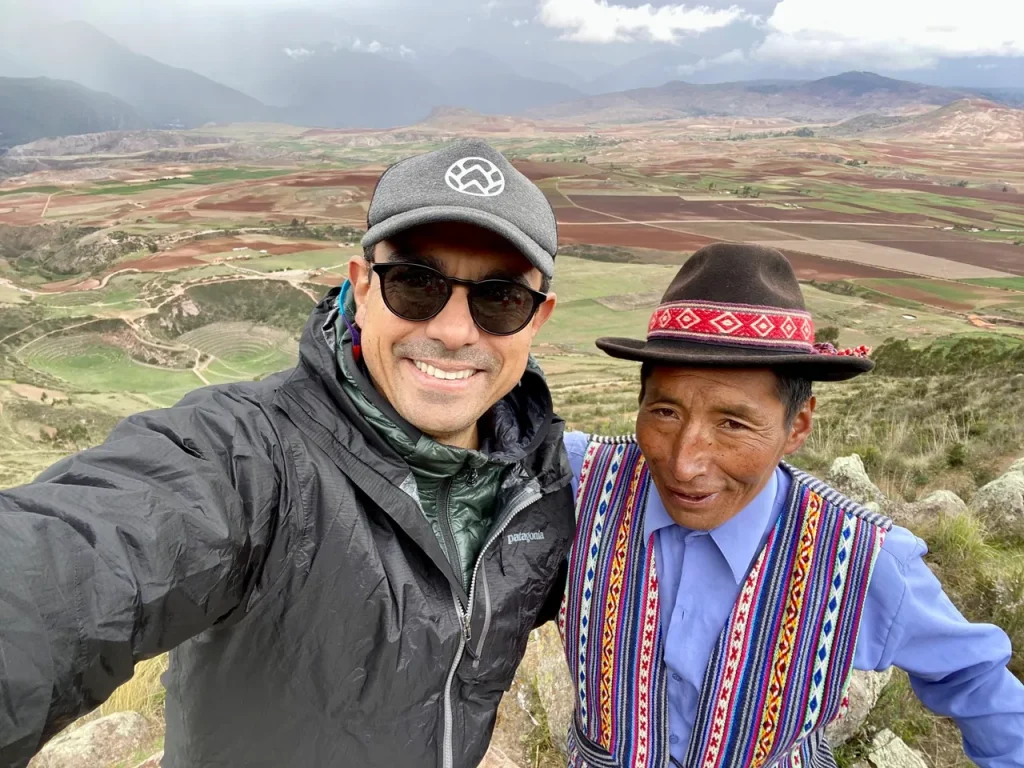
2. So what is your top suggestion for “travelling differently” in Ecuador and/or Peru?
There are lots of tour operators that can show travellers the highlights of Ecuador and Peru. Tropic helps people get under the skin of the country. We have relationships with locals who joyfully welcome people into their homes, their daily lives and their cultures. You can stay at a hacienda and have a wonderful time. Or you can trek through the beautiful mountains, stop at a family’s home to cook and share a meal with them and then go to your mountain lodge. It gives a whole new perspective on the way of life in the Andes.
3. Thirdly, what does sustainable travel look like to Tropic?
It means taking a hard look at every single thing we do – from the partners we choose to work with in our various destinations to the sources of power in our offices – and finding a way to do it the best way we know how.
How can we better partner with the local community? Give them a larger stake in what we are doing? Our unique Guardians program helps to invest our hosts/guides in every aspect of the guest experience – this means your travellers have an expert local resource that will help guide them to meaningful interactions and ensure their approaches and exchanges are respectful of local cultures, customs and individuals.
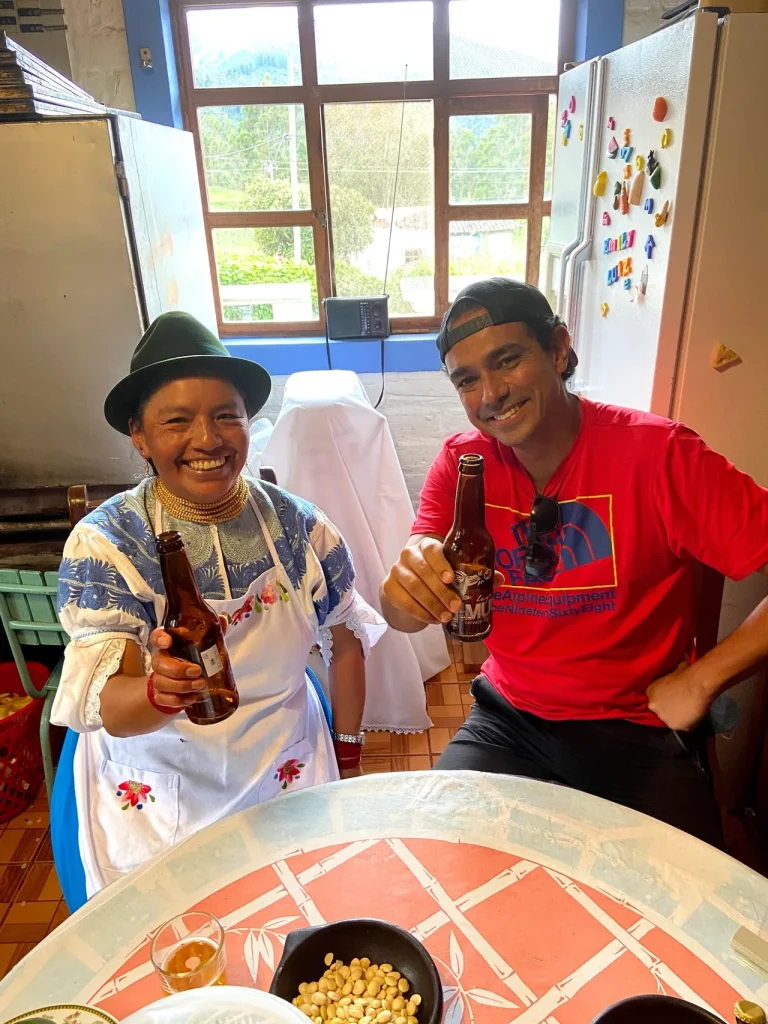
4. Can you give us an example of a really special eco-lodge or destination?
Last month I trekked Apu Ausangate in the Southern Valley of Cusco. This is the land of the Chilca and Osefina people – the last alpaca and llama herders in the world. They are also the hosts of this special community operated trek. We spent our days exploring the breathtaking mountain landscapes on foot, hosted by community leaders who share the importance of the sacred Ausangate Mountain, which is closely linked to the Andean Cosmovision and mythology. These same hosts run the lodges where we stay. After a long day of hiking, you want a warm, comfortable bed, delicious meals to refuel and a crackling fire to sit around and share the day’s stories – that’s what you’ll find – along with no distractions from the outside world. It’s really special and has to be experienced firsthand. I’m really proud that we represent this community operated experience to the trade. Speak to our team about including this incredible trek into your tailor-made Peru trip.
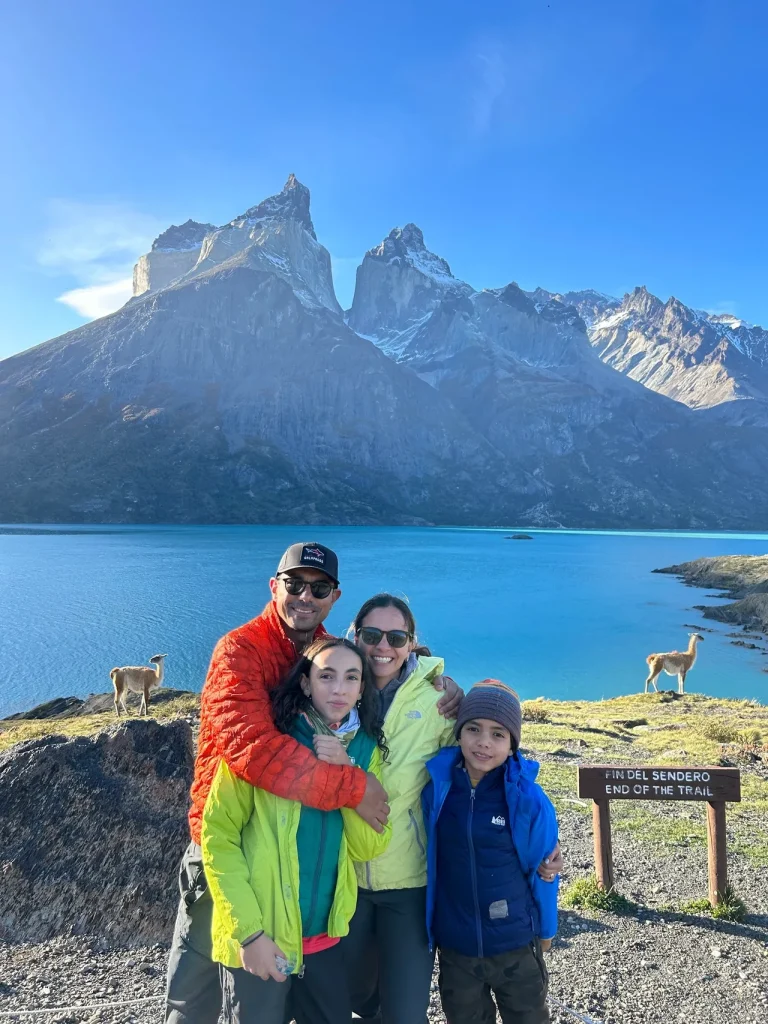
5. What is your favourite travel memory / activity / experience?
Our last family adventure in Patagonia and Torres del Paine is fresh in my mind. We spent a week exploring the park and another week at a traditional hacienda, living like locals. It’s really cool to fly to the ‘end of the world’ at Punta Arenas – the kids loved figuring out how far they were from home and how they were at the end of the world’s southernmost terra firma. As remote as Puenta Arenas feels, driving a bit north towards Torres del Paine National Park somehow feels like you’re getting more remote – is that even possible?
Every day in the park we encountered mindblowing landscapes – from glaciers to the base of the iconic towers. It was fantastic! We then hit the other side of Las Torres and made a traditional hacienda home. We had delicious traditional food (and lots of wine!), learned about the working farm, saw pumas up close as well as lots of condors – it was incredible! Obviously we wanted to stay and live at Cerro Guido! We’re all still dreaming about it!
6. Tell us about any really unique / different activities Tropic can offer our guests?
I’m really proud of our ‘May I Introduce You’ programs. These are special local, insider experiences we’ve created that run the gamut from an afternoon painting workshop with a talented local artist to a sit down (and taste!) with the ‘potato whisperer,’ an agricultural wizard who shares his secrets with visitors and initiates them into the unknown world of the Andean potato and other tubers. We love to share our connections so that travellers can have unique, intimate experiences that will take their trip to the next level.
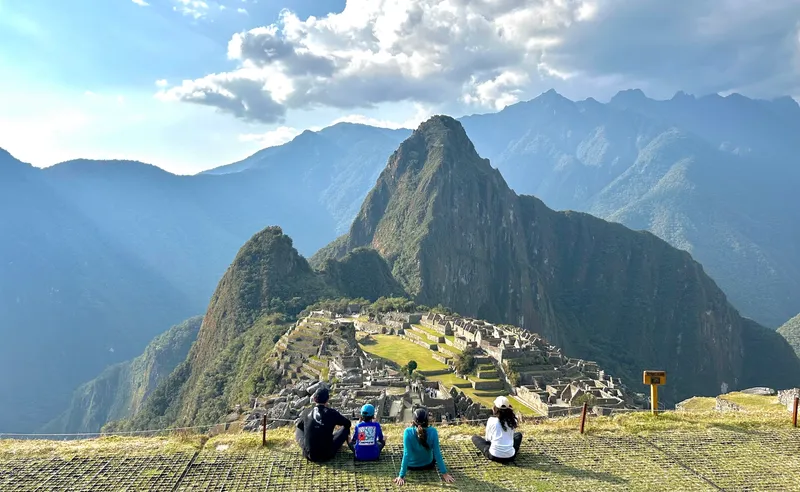
7. Lastly, what is the future of travel in South America and finally what is new and exciting for 2024?
At Tropic we are connecting unique ecosystems, wildlife corridors and experiences and the United Latin Nations of cultures! Between Ecuador, Peru and Chile, guests can get a range of South American flavors while having Tropic-style experiences – a more intimate immersion in each (or all!) destinations. We will continue unveiling special experiences for our travellers in 2024 – stay tuned! Keeping up to date with future trends and ideas will show us all how to travel responsibly in South America.
Summary
As you can see, it is certainly possible to travel responsibly to South America and take low impact holidays. Through conscious planning, e.g slow travel, and being mindful of the impact of your holidays, you can travel better and travel greener to all corners of South America. From only using the best guides in Peru, to taking less flights within Argentina, or specifically staying in the best sustainable Eco-lodges in Chile, you can enjoy positive impact travel and eco tourism in South America. Contact one of our responsible travel experts to plan your trip.
Why Book With Travel Differently
Passionate and experienced
- Each member of the team has over a decade of experience in the industry
- Our 5* client reviews reflect our service & standards
- We are a fully independent & owner-run tour operator
- Our holidays include full financial protection & ATOL coverage
- We are destination experts, ensuring authentic & reliable advice
Committed and Responsible
Tailor-made and Personal
- No two trips are the same, our holidays are 100% bespoke
- We design personal, genuine cultural connections & experiences
- From planning to travel, you’ll have one dedicated point of contact
- Our support is available around the clock during your holiday
- We take care of the details, so you don’t have to
